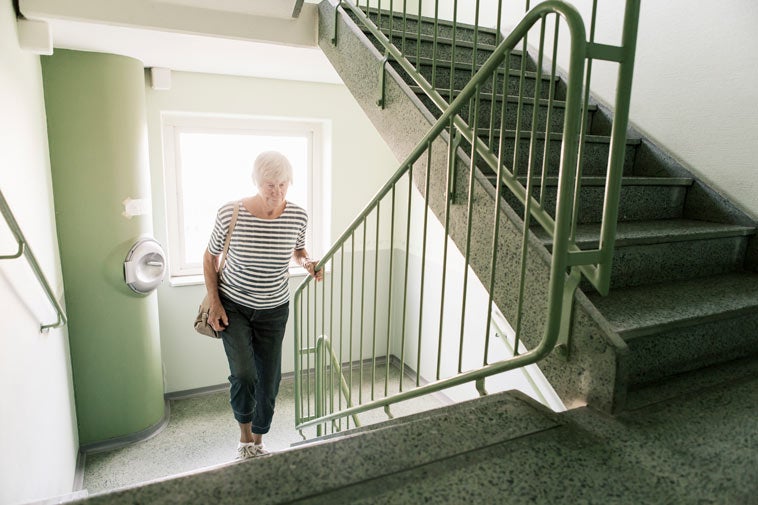Fitness
Staying Fit the Old-fashioned Way

Stroll down the aisles of any department store these days, and your eye will be drawn to an appealing collection of labor-saving gadgets. These can include everything from snow blowers and electric hedge trimmers to remote controls for the TV and DVD player.
It's enough to alarm every health and exercise expert in the land and for good reason. These labor-savers are associated with America's slide toward laziness. A large part of the American public isn't getting enough exercise. Medical problems like heart disease and high cholesterol are linked to a lack of exercise. They are a growing threat to public health. In addition, an inactive lifestyle increases the risk for overweight and obesity, high blood pressure, type 2 diabetes, osteoporosis, and certain types of cancer.
Modern conveniences
Much of the decline in physical activity can be blamed on the modern conveniences that are rapidly replacing old-fashioned physical work. Our high-tech and increasingly inactive lifestyle is also to blame.
With no more leaves to rake or snow to shovel, people are finding it harder to fit physical activities into their schedule. But it's not that difficult. Consider this: You already have certain activities built into your daily schedule. You can build exercise in as well.
A manual approach
Certainly modern devices can make life easier. But they also can rob you of needed exercise. Maybe it's time to dust off the old push lawn mower. When you watch TV, try changing the channels by hand. During commercials, use the farthest bathroom, especially if it's upstairs. Get in the habit of sweeping your sidewalk and scrubbing your floors.
-
Try new ways of doing things. Realize that for a 154-pound person even 10 minutes of light gardening and leaf raking can knock off at least 50 to 60 calories. Even bursts of activity like this can improve blood pressure and blood sugar control. And improve mood.
-
Try resisting some labor-saving devices. Build in a certain kind of way of thinking, the kind that says, "I'm going to resist as many of these machines as possible."
-
Build your own low-tech exercise tools, inexpensively. For example, take a plastic, one-gallon milk jug and fill it with water. It now weighs 8 pounds. Now include that jug in a variety of stretching and pulling exercises that call for weights.
-
Look for ways to make your surroundings exercise-friendly. Play loud, upbeat music when you're doing brisk physical chores. Research shows that you'll work faster. And burn more energy.
-
Try taking the stairs each day instead of the elevator. Or park at the farthest corner of the parking lot. Get off before your stop on the subway and walk a few extra blocks.
-
Always check with your healthcare provider before beginning any exercise program or increasing your level of exercise.
Featured in
Author: Nugent, Tom
© 2000-2025 The StayWell Company, LLC. All rights reserved. This information is not intended as a substitute for professional medical care. Always follow your healthcare professional's instructions.
